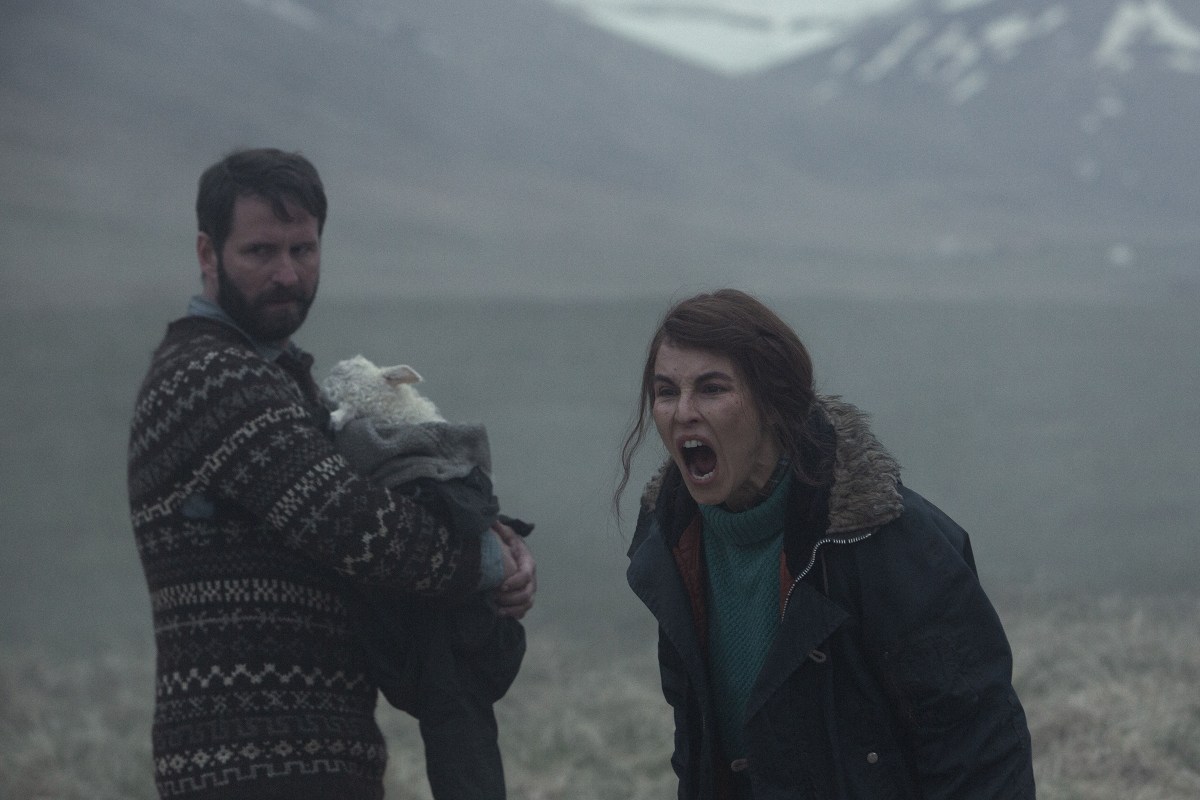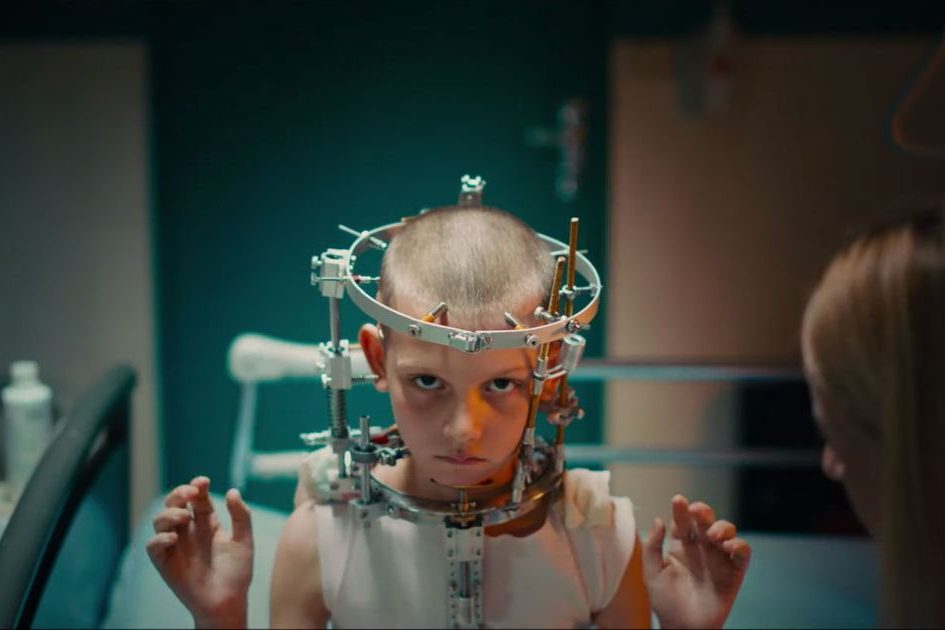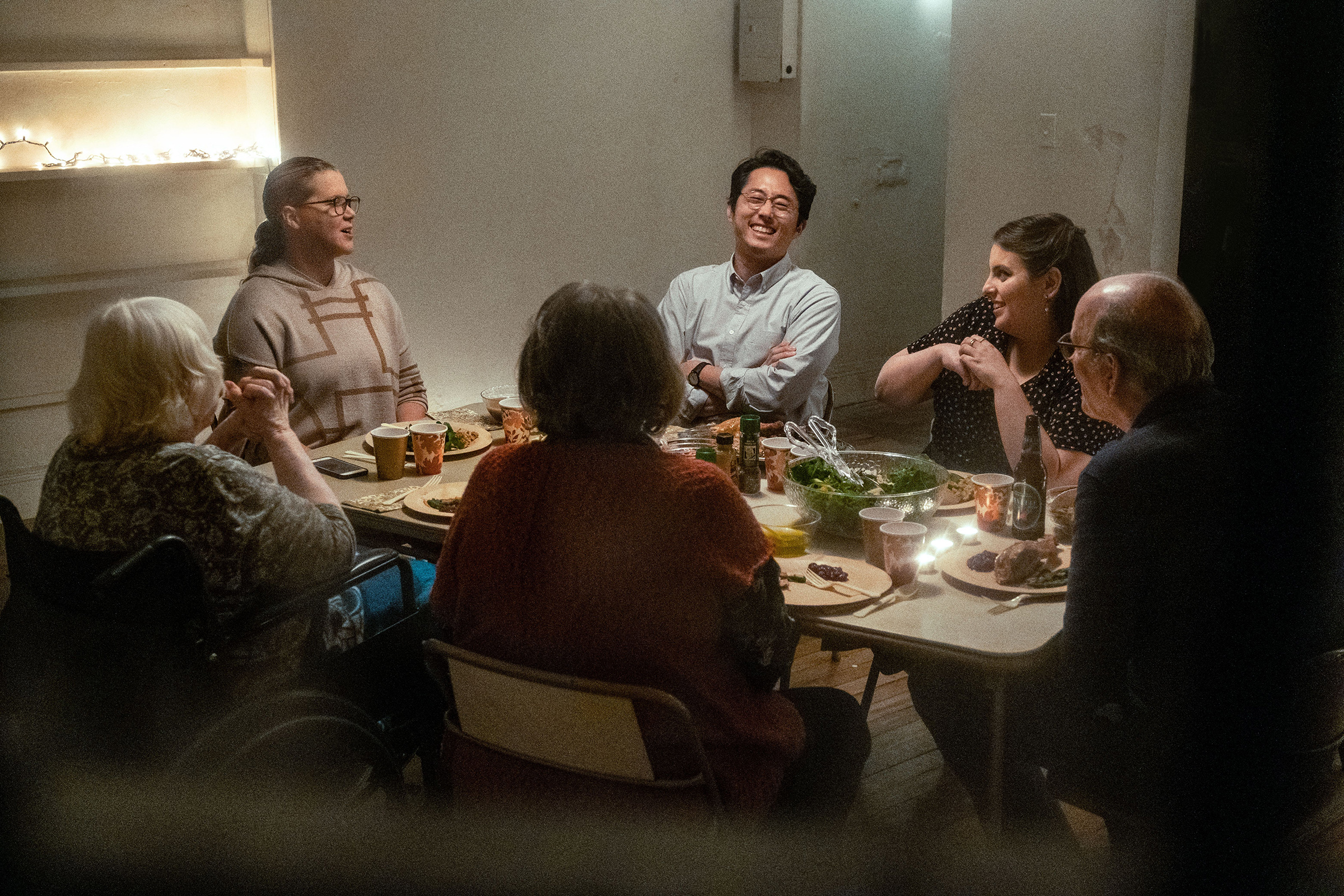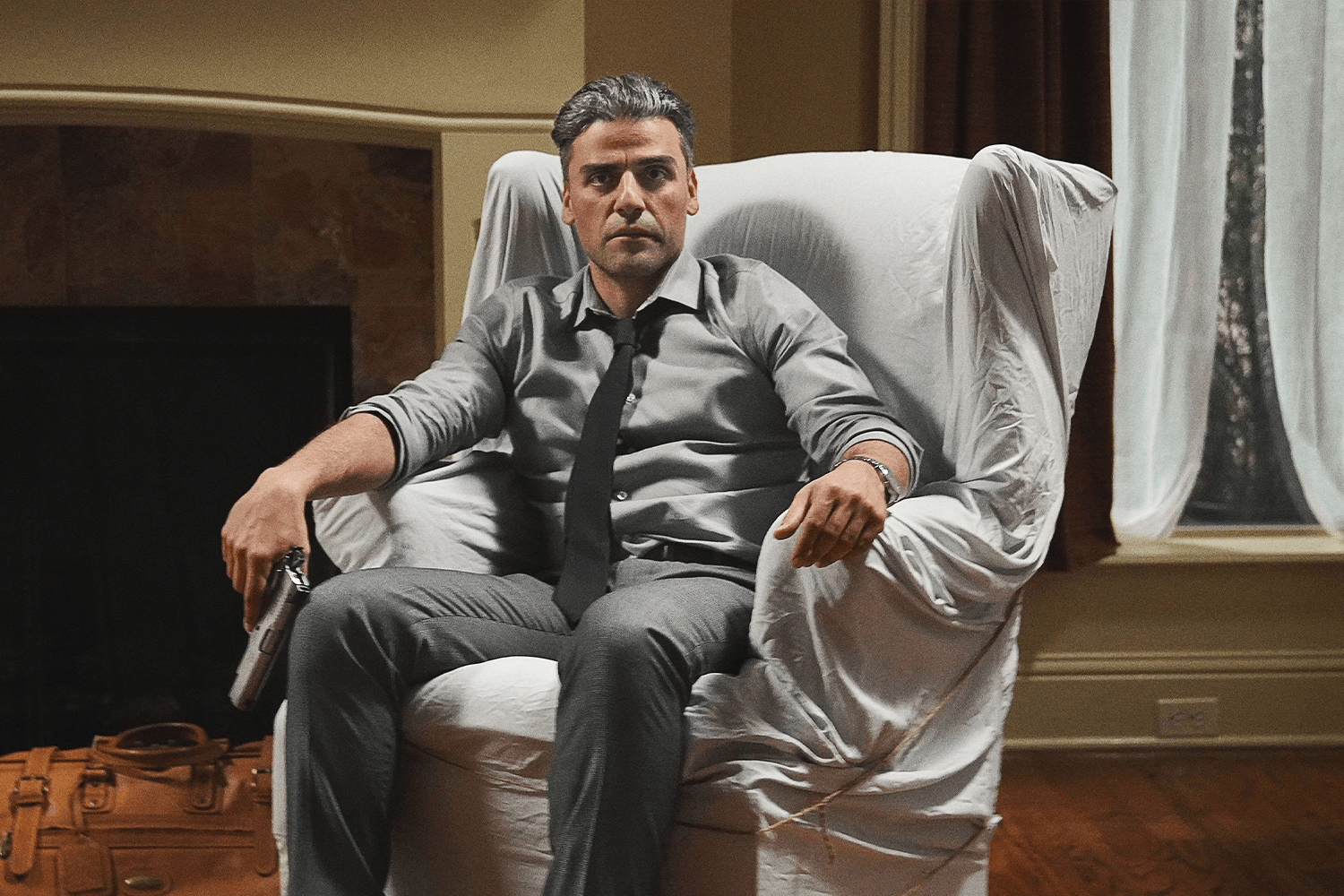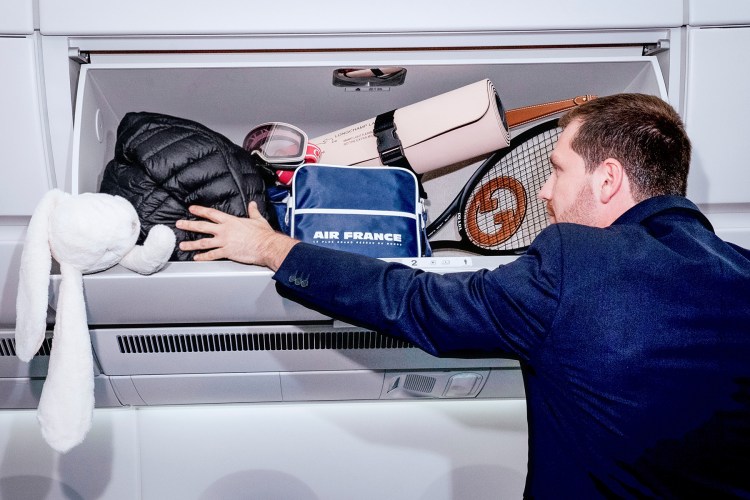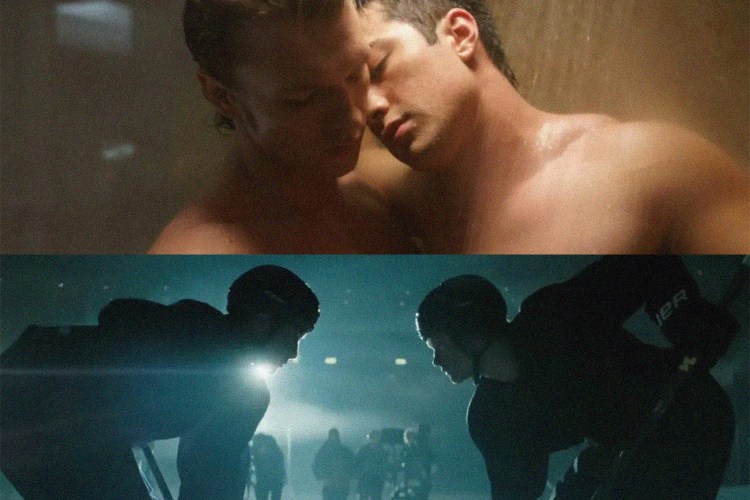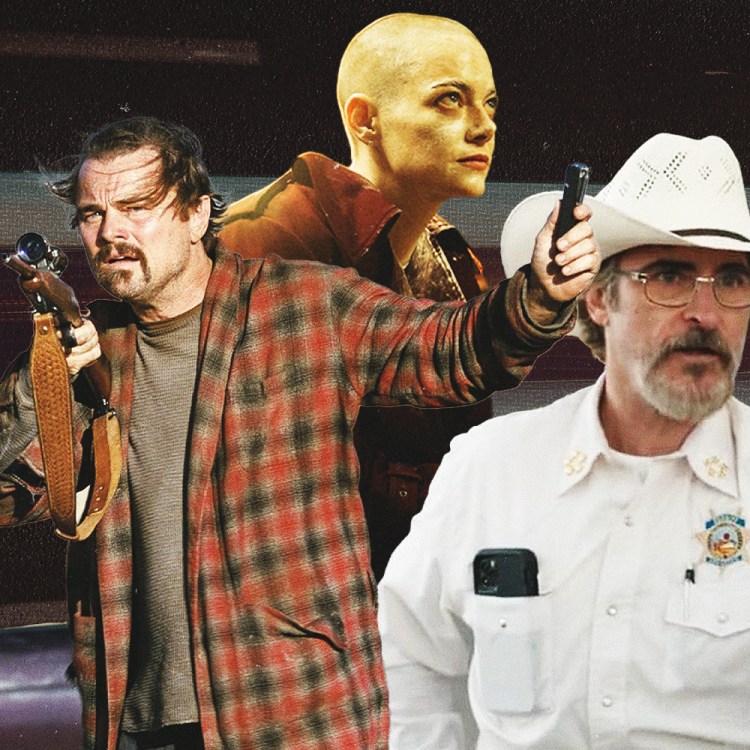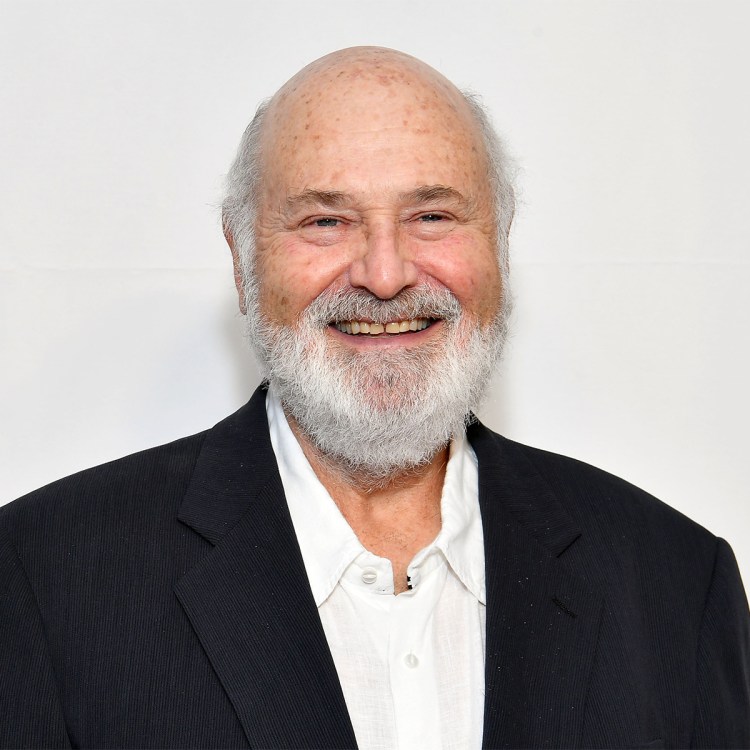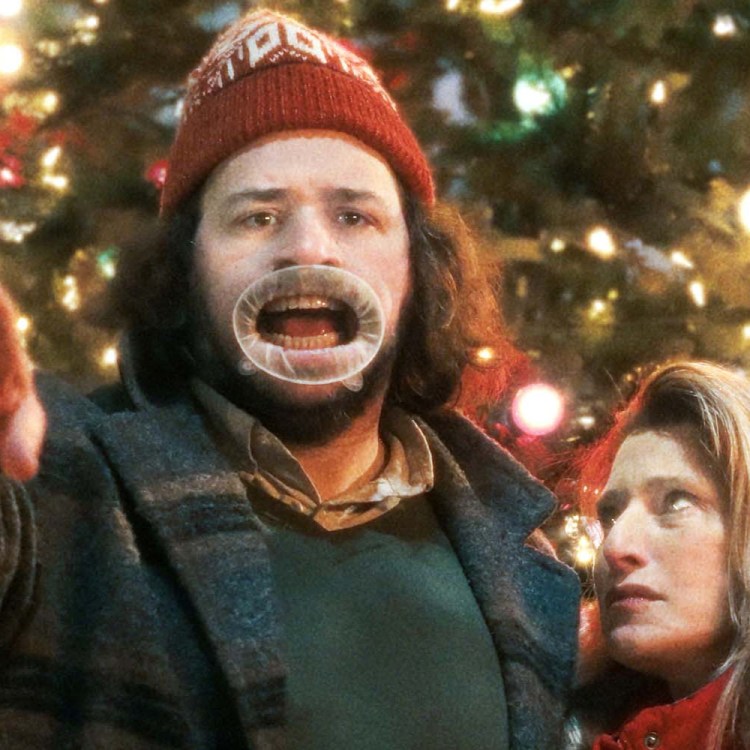In Lamb, which opens today in select U.S. theaters, two grief-stricken Icelandic sheep farmers, María (Noomi Rapace) and Ingvar (Hilmir Snær Guðnason), get a second chance at parenthood when, amid the spring lambing season, one of their ewes gives birth to a very strange creature, whom they bring from the barn to the house, raise as their own and name “Ada.”
The first feature film directed by Valdimar Jóhannsson, Lamb was cowritten by the Icelandic novelist Sjón, whose novels dive into Icelandic history, with its currents of pagan and Christian belief, man-vs.-wild hardship and antiquarian knowledge — like The Blue Fox, a slim fable about a vain 19th-century pastor on the hunt for a creature who may not be of this world, and The Whispering Muse, about an amateur herring historian and reincarnated Argonaut swapping tales on a 1940s merchant ship. A longtime collaborator of Björk, Sjón was nominated for an Oscar for cowriting the lyrics to “I’ve Seen It All” from Dancer in the Dark (the song she performed in the swan dress). He also has a part to play in her much-anticipated, long-awaited return to acting: Sjón cowrote The Northman, next year’s Viking epic from The Witch and The Lighthouse director Robert Eggers, in which Björk is said to play a witch from a different time and tradition.
At once sophisticated and mystical, Sjón’s novels straddle an important divide in Iceland — one that Lamb does as well. Lamb certainly has enough harshly beautiful country landscape to satisfy viewers who have seen the Will Ferrell Eurovision movie and think all Icelanders believe in elves, but the casting of the film shows the other side of Icelandic culture: the Swedish Hollywood star Noomi Rapace (who grew up partly in Iceland and speaks the language fluently), of course, but also Hilmir Snær Guðnason, the star of the generation-defining dirty-weekend bildungsroman 101 Reykjavík, and, as his black-sheep brother, Björn Hlynur Haraldsson, cofounder of an internationally renowned experimental theater troupe.
With backing from A24, the distributor that launched The Witch and Ari Aster’s pseudo-Scandi Midsommar, Lamb is folk horror with a twist — or rather, the folk-horror is the twist. Shot on an abandoned farm in the north of Iceland, shrouded in poetically ominous fog and proceeding almost at the pace of slow cinema, with much portentous dead air, it’s a very outward-looking, international-arthouse spin on a typical Icelandic genre in a typical Icelandic place, where the handball is on TV and horses stay warm by turning their asses into the wind.
It was this mingling of the everyday and the otherworldly that attracted Sjón to the material, as he explained when we Zoomed this week.
InsideHook: My understanding is that the producer of this film put you together with Valdimar Jóhannsson at a stage when he had a scrapbook full of ideas for the film.
Sjón: Valdi got in touch via email and told me that he had an idea for a film. That is not uncommon in Iceland, that people have ideas for films; it was a hunch that maybe I should meet this guy and see what he was up to.
He showed me this amazing little scrapbook — it of course has turned out that even if I was the first to fall for the scrapbook, I was not the last. This was simply such an original, strange idea, from an Icelandic filmmaker. Most Icelandic films are in the realist tradition, and here was someone who had put together a scrapbook filled with collages of women holding babies with lamb’s heads, amazing pictures of the countryside where he imagined the story to take place. This immediately appealed to my surrealist sensibilities, and I realized there was a great challenge involved in bringing this story to life.
Your novels often come out of an extensive process of research and engagement with Icelandic history and lore. Are there specific stories you’re drawing on? There’s a story collected by [19th-century folk historian] Jón Árnason about a man who takes home a sealskin from a beach, returns to the beach to find a beautiful naked woman there, and marries her while keeping her sealskin locked away so that she can never return to the sea …
That’s definitely one of the stories feeding into this one. In that case, you have a woman who is of the seal nation, and she has a real life on land — there’s nothing that indicates that she does anything out of the ordinary throughout her life on land. But of course at the very end of the story she finds the sealskin and returns to the sea, saying, “I’ve got seven children on land and seven children in the sea,” and returns to the children in the sea.
I think, like in The Blue Fox, what we are doing in Lamb is taking the general worldview of the folk story, which is that when strange events happen, you don’t question them, because they are a part of the world you’re living in, and the world you’re living in is a world where there are creatures in lakes and the sea and in the mountains, and you can always expect to be visited by these forces. When you’re out in the dark going from one farm to another and you’re approached by a walking dead holding his head under his arm, you don’t start an argument with that creature about if it’s real or not.
This argument is something that the film touches on, with the character of Ingvar’s brother: he’s dressed all in black, he’s in a band, he’s from the city, and he can’t accept what’s happening because he’s a cosmopolitan person and this is not his world. Many Icelandic artists of your generation are ambassadors for a culture that is associated in the international imagination with this supernatural relationship to nature, even as they are quite urban and take influence from abroad; I think that’s a dichotomy the film plays with.
If we want to talk about how my generation dealt with these things, we were very occupied with bringing in influence from abroad, in music, in literature, in visual arts, but at the same time we were also very occupied with the folk traditions, and both of these elements were used to attack and question the incredibly boring reality of the late ’70s that we grew up in.
But I think in the case of the brother in Lamb, he doesn’t question if the creature is real or not — he just says, “What are you doing?” And maybe that’s the farmer in him. Because under normal circumstances, if a lamb like that is birthed, it is put down immediately. So he questions that they have decided to become a family with this creature; he’s not asking where does it come from or anything, it’s just, it’s fucking weird, you’re behaving as if this is your child. He knows of course that they’ve lost a child, he understands the psychology of it, and maybe he’s worried for them as well.
You mentioned that there isn’t much of a surrealistic or supernatural or symbolic tradition in the rural Icelandic film. And when I did a Q&A with Valdi, he said he thought of Lamb as “a very realistic film, except for this one thing.” You have familiar elements: this desolate forbidding place, like in a lot of deadpan rural films about being depressed or stuck in an existential rut; these lonely isolated people, which speaks to the urbanization of Iceland and the decline of rural lifestyles. So you’re dealing with this whole history of Icelandic film.
For the story to work, we had to be true to the life of people on a farm like this. What is the day of a sheep farmer? In the birthing season, what do they do? Valdi — he’s the director, I’m the writer, I’m not supposed to make my hands dirty, I should just sit in my nice clothes by the writing machine and think — so he had to do the hands-on things. He went through a birthing season on a farm, to understand the routine. All of this was necessary to introduce a strange element, so that when it happened, you would not question it, in the same way that they don’t.
You also had to be true to their emotional life. I would go as far as saying that, on the whole, this story is not original. It is about a couple who have lost a child and are living with the grief of that loss. And when the opportunity somehow comes, to fill the void in their lives, they go for it. And then you have a very well-known setup, which is that the troublesome brother returns. So the mechanisms of the story are all quite known to the audience, and that is also a part of why we get away with this strange little creature.
I’m saying that maybe this film will kill the Icelandic rural film. It should be the last one.
Do you feel that there’s a definite environmental allegory in Lamb? I found it very open-ended — I was never sure if they’re living in harmony with nature or in opposition to it.
The whole film is presented as a fable, and as with all good fables, it works on many levels, each of us bring ourselves to the fable and read into it … This film’s story is both a fable about individuals, how they engage with grief and loss, and a fable about man, and his place in the world.
Well, what is living in harmony with nature? There are people who think all farming of animals is violence to animals. I think the relationship María and Ingvar have with their sheep — which is a completely normal farmer-animal relationship, let’s be sure about that — also exposes that this is a relationship based on power. The way María reacts to the ewe, when she tries to get her offspring back, shows us where power lies in that relationship.
I think stories about man’s relationship with nature are important stories today because they help us reflect on the big issue of climate change. Nature is not under control, it has never been under control; maybe we’ve had the illusion once in a while that we are the masters of this all, but we aren’t, and Lamb reminds us of that.
You’ve cowritten another upcoming film shot in Iceland: Robert Eggers’s The Northman. I think of Eggers’s films as being like your books: He tells stories set in the past that feel authentic to their time and place, that pull from stories without being adaptations.
We just clicked when we met. I think The Witch had just screened at Sundance and Robert was still telling people, “and by the way, I’m not related to Dave Eggers.” Because obviously everybody asked him if he was related to the more famous Eggers. I don’t think people are asking him this now. We started talking, Robert and I; it turned out that he had just made this film, and I had written a novel taking place in early 17th-century Iceland, about a character who is accused of witchcraft, so obviously we had been on similar ground there.
I think the reason Robert wanted to work with me was more or less the same reason Valdimar wanted to work with me. It was because of things I’d been doing in my books, bringing strange elements into a very real situation, and presenting them as part of that reality. This comes from the Icelandic sagas: the sagas were, for a long time, talked about as if they were quite realistic depictions of those times. And if we accept that they are realistic depictions of medieval Iceland and Nordic society, then we also must accept that dreams that come true are a part of that reality; visions of riders in the sky are a part of that reality; mountain-dwellers who have to be visited and killed are a part of that reality. So that’s what we’re working with in The Northman, all the supernatural elements of medieval times that are real to the people of those times, just as we are doing in Lamb.
This article appeared in an InsideHook newsletter. Sign up for free to get more on travel, wellness, style, drinking, and culture.
